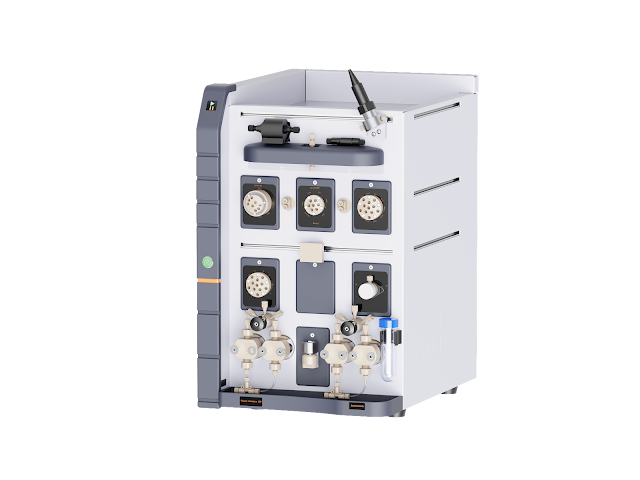Innovations in Biotechnology: Exploring Oligonucleotide Synthesis and Fast Protein Liquid Chromatography
In the ever-evolving field of biotechnology, advancements in oligonucleotide synthesis and fast protein liquid chromatography (FPLC) are revolutionizing research and therapeutic applications. These technologies are crucial for developing new drugs, studying genetic material, and purifying proteins. This article delves into the significance of these two cutting-edge techniques, highlighting their impact on science and medicine.
The Basics of Oligonucleotide Synthesis
Oligonucleotide synthesis refers to the chemical process of creating short sequences of nucleotides, the building blocks of DNA and RNA. These synthetic oligonucleotides are used in a variety of applications, including genetic research, diagnostics, and therapeutics. The ability to synthesize specific sequences allows scientists to study gene function, develop genetic tests, and create targeted treatments for diseases.

The Process of Oligonucleotide Synthesis
The process of oligonucleotide synthesis involves assembling nucleotides in a specific order, typically using automated synthesizers. This method ensures high precision and accuracy, essential for the effectiveness of the oligonucleotides in subsequent applications. Each nucleotide is added step-by-step, and the growing chain is chemically protected to prevent unwanted reactions. Once the desired sequence is complete, the protecting groups are removed, and the oligonucleotide is purified.
Applications of Oligonucleotide Synthesis
The versatility of oligonucleotide synthesis has made it a cornerstone in biotechnology. In research, synthetic oligonucleotides are used in PCR (polymerase chain reaction) to amplify DNA sequences, enabling detailed genetic studies. In diagnostics, they are employed in the development of probes and primers for detecting specific genetic markers associated with diseases. Therapeutically, antisense oligonucleotides can target and modulate gene expression, offering potential treatments for genetic disorders and cancers.
Fast Protein Liquid Chromatography (FPLC) Overview
Fast protein liquid chromatography is a powerful technique used to purify proteins based on their size, charge, and other properties. This method is essential in both research and industrial settings, where pure proteins are required for structural studies, enzymatic assays, and pharmaceutical production. FPLC offers high resolution and speed, making it ideal for separating complex protein mixtures.
How FPLC Works
The principle behind fast protein liquid chromatography involves passing a protein mixture through a column packed with a resin that separates the proteins based on specific characteristics. The most common types of FPLC include ion exchange, affinity, and size exclusion chromatography. Each type targets different properties of proteins, allowing for selective purification. The process is monitored in real-time using detectors that measure protein concentration as they elute from the column.
Advantages of FPLC
The primary advantage of fast protein liquid chromatography is its ability to quickly and efficiently separate proteins with high purity. This efficiency is critical for producing proteins for pharmaceutical use, where contaminants can affect drug efficacy and safety. Additionally, FPLC systems are highly automated, reducing the potential for human error and increasing reproducibility.
Integrating Oligonucleotide Synthesis and FPLC
The integration of oligonucleotide synthesis and fast protein liquid chromatography in a laboratory setting enhances the capability to conduct advanced biotechnological research. For example, synthesized oligonucleotides can be used to clone and express specific proteins, which are then purified using FPLC. This combination accelerates the pace of research and development, facilitating the creation of new diagnostics and therapeutics.
Future Prospects
The future of oligonucleotide synthesis and fast protein liquid chromatography looks promising, with ongoing advancements aimed at increasing efficiency, accuracy, and accessibility. Innovations in automation and digital technology are expected to further streamline these processes, making them more user-friendly and cost-effective. As our understanding of genetics and protein chemistry deepens, these technologies will undoubtedly play a crucial role in the next generation of medical and scientific breakthroughs.

Conclusion
For those interested in exploring the latest advancements in oligonucleotide synthesis and fast protein liquid chromatography, Inscinstech.com.cn provides a wealth of information and resources. This platform offers detailed insights into the technologies shaping the future of biotechnology, helping researchers and industry professionals stay informed and competitive. By visiting Inscinstech.com.cn, you can gain access to expert knowledge and tools essential for pioneering work in biochemistry and molecular biology. Embrace these innovative technologies and discover how they can elevate your research and development efforts.
.jpg)

Comments
Post a Comment